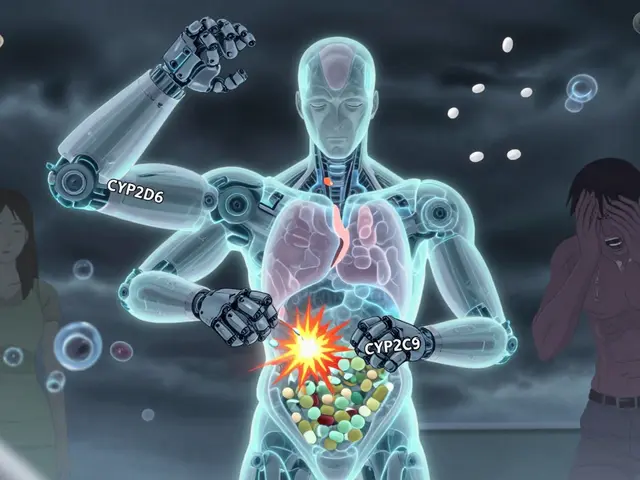Fatigue: Practical Ways to Find Out Why You're So Tired
Feeling tired all the time? You're not lazy. Fatigue is a common symptom that often points to sleep problems, medical issues, or lifestyle factors. This page helps you sort the likely causes, simple tests your doctor may order, and clear steps you can start today to feel better.
Common causes and basic checks
Start by looking at sleep. Poor sleep quality, sleep apnea, and inconsistent schedules are huge culprits. Next, consider meds—many prescriptions and over-the-counter drugs cause drowsiness. Medical issues like anemia, low thyroid (hypothyroidism), diabetes, chronic infections, and vitamin deficiencies (B12, vitamin D) also show up as fatigue. Mental health matters, too; depression and anxiety drain energy. If fatigue is new, severe, or getting worse, your doctor will usually order simple tests: CBC for anemia, TSH for thyroid, basic metabolic panel for electrolytes and kidney function, blood sugar, and vitamin levels.
Write down when you feel worst during the day, how long symptoms have lasted, and any other signs like weight change, fever, or shortness of breath. A short diary helps your clinician spot patterns faster.
Simple fixes you can try today
Small habit changes often make a big difference. Improve sleep by keeping a regular bedtime, reducing screens before bed, and making your bedroom cool and dark. Aim for 7–9 hours of quality sleep. Move your body—regular short walks boost energy and mood more reliably than extra coffee. Watch alcohol: it may help you fall asleep but worsens sleep quality and leaves you tired the next day.
Fuel your day with protein at breakfast, balanced meals, and steady hydration. Caffeine is useful but limit it to the morning so it doesn’t ruin sleep. If medications are likely to blame, ask your prescriber about alternatives or timing changes. For persistent low energy tied to mood, cognitive behavioral therapy (CBT) or talking with a therapist can be very effective.
Practical day strategies include short power naps (10–20 minutes), scheduling high-focus tasks when your energy peaks, and breaking big tasks into 25–50 minute blocks with small breaks. Use bright light in the morning to reset your internal clock—open curtains or try a light lamp.
When to see a doctor? If fatigue lasts more than two weeks, comes with unexplained weight loss, fever, chest pain, fainting, or trouble breathing, seek prompt care. Also see a clinician if simple fixes don't help—some conditions need treatment, not lifestyle change.
Tracking symptoms, checking basic labs, fixing sleep, and adjusting daily habits will solve many cases of fatigue. If it doesn't, your doctor can run deeper tests and guide treatment. You can get better—start with one small change today and build from there.
If you keep a simple symptom log for two weeks and bring it to your appointment, clinicians usually find the pattern quickly. Include sleep times, naps, caffeine, mood, and any new meds or supplements. Take that list to get targeted tests and a plan. Small, steady fixes plus a focused medical check often cut fatigue in half within weeks.
Start one change today now.
Georgea Michelle, May, 8 2023
The Link Between Delayed Sleep Phase Syndrome and Chronic Fatigue Syndrome
After researching the connection between Delayed Sleep Phase Syndrome (DSPS) and Chronic Fatigue Syndrome (CFS), I've found that there seems to be a strong link between the two. Both conditions involve a disruption in sleep patterns, which can lead to persistent exhaustion and negatively impact daily life. Some studies even suggest that DSPS may be a risk factor for developing CFS. With a greater understanding of these sleep disorders, it's crucial for individuals experiencing symptoms to seek professional help to properly address and manage their condition. Let's continue spreading awareness about the link between DSPS and CFS, as it could benefit many people struggling with these sleep-related issues.
View More





